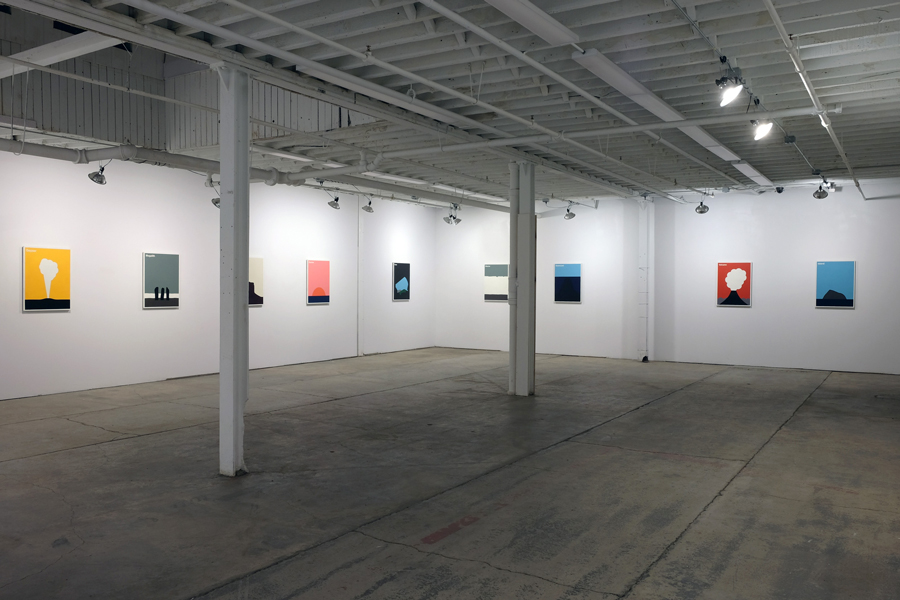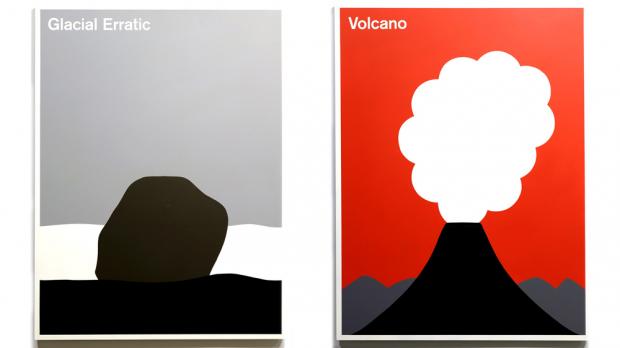Features: Julian Montague at BT&C Gallery
So what all’s going on in artist Julian Montague maximum simplicity paintings of environmental subject matter? A score or so of them currently on view—an exhibit called Features—at the BT&C Gallery. A few others were in the last Hallwalls exhibit.
In an emphatically bare bones graphics representational style—each painting composed of just three or four adjacent flat monotone color or simply tonal areas—depicting such environmental features as an iceberg, an island, a glacier, a volcano, sunrise, sunset, a mountain peak. And a single word subject matter title somewhere on the painting. Iceberg. Island. Glacier.
Some possible art historical source or inspirational precedents of the radically reductionist mode: artworks by Matisse, aspects of Japonisme, kids’ coloring books.

Montague has employed such simplistic graphical strategies and forms in previous work, but the forms basically as symbols rather than pictorial elements. These are paintings, in a landscape painting tradition that goes back a few centuries.
But enlarging and extending the tradition. Representing a turning point in the tradition, in accord with the turning point we’re experiencing in the environment itself, and thus our relationship to the environment. What it has meant to us. What landscape meant. These things used to be objects of awe, pretty much pure and simple. Now they are object lessons, about our power to destroy even what is awesome.
Even willingness to destroy. When a substantial part of the populace—as a dogma item of one of the political parties—refuses to acknowledge the reality of the turning point, crisis point.
Regarding the source or inspiration of the environmental paintings, as much as or more than art historical precedents, they seem reminiscent of the story of when Vince Lombardi during one of the Packers’ practice sessions—when they just didn’t seem to be getting it—halted the session and called the players around himself and addressed them, in an ultimate back-to-fundamentals speech that began: “Gentlemen, this is a football.”
What Montague seems to be saying with the environmental paintings—particularly to the segment of the populace that isn’t getting it—is: “Gentlemen, this is a glacier. This is an iceberg. This is the environment.” Etc. Pay attention. Understand what’s happening. It’s called global warming. And it is a crisis.
In his artist’s statement about the paintings, Montague talks about how “in their simplicity and stillness the images are meant to evoke the very slow, very long march of geological time.” That’s there—slow geological time—in the recollection of the landscape tradition. But just as prominent, the current crisis moment, when the march has speeded up. Dizzyingly, maybe disastrously.
The BT&C exhibit continues until January 23. A closing reception is scheduled for January 21, from 6 to 8pm.

